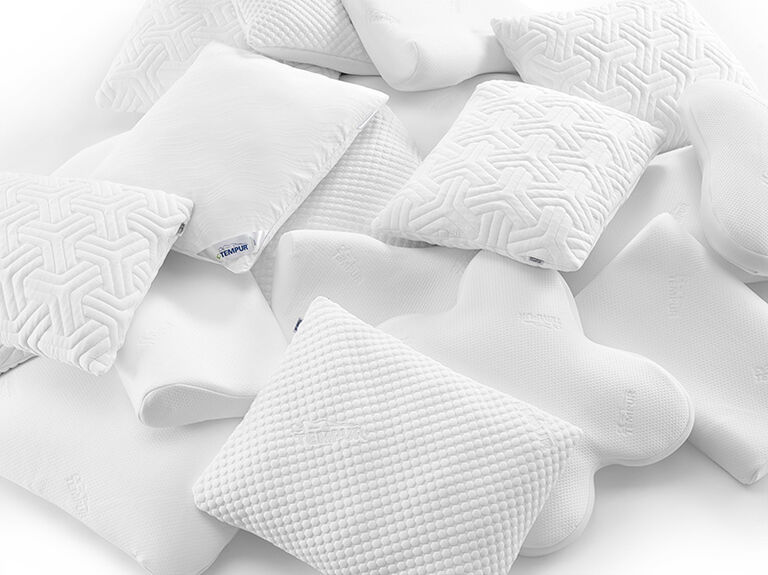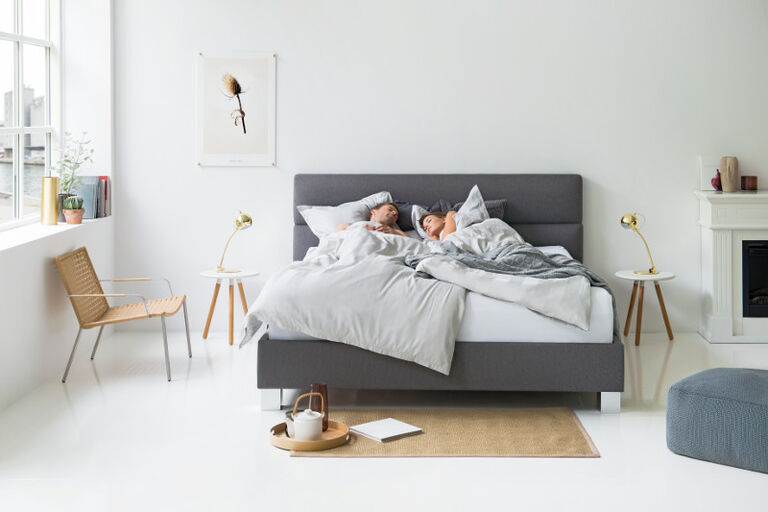HOW TO FIND THE BEST MATTRESS FOR A BAD BACK

It’s generally accepted that getting seven to nine hours of sleep each night allows most people to perform at their peak. However, the quality of that sleep is crucial.
Not getting enough sleep – or getting poor quality sleep – can result in any number of health problems, with cognitive impairment issues top of the list. A lack of good quality sleep can result in slower reflexes, irritability, memory loss, and an increase in stress and illness, which can lead to more serious health problems later on.
Improving your sleep quality can mean altering environmental factors, such as the temperature and darkness of your bedroom, as well as the mattress and pillows you sleep on. If you happen to have back or neck pain, then the mattress you choose will have an even bigger impact.
WHY CHOOSING THE RIGHT MATTRESS FOR YOUR BACK IS SO IMPORTANT
According to the Australian Physiotherapy Association*, around 25% of Australian adults suffer from back pain. As astounding as that figure is, what’s even more incredible is the fact that their back pain could be reduced – or resolved – by a change in mattress.
While most people wouldn’t need a research study to tell them this, a 2010 study** showed that a mattress that is poorly made, or one that does not provide the adequate amount of support, can cause or worsen a bad back.
However, finding the best mattress for back and neck pain isn’t always easy. When sleeping, your body needs to be able to relax in a position where you are fully supported, where you can recover from the demands of the day.
But, the support you need is particular to you, especially if you have a bad back or neck pain. For example, if you have a stiff lower back or lumbar lordosis, then a mattress that is supportive but not too hard is generally recommended. Whereas, if you have a flexed lower back and you tend to slouch when you sit, you will typically benefit from a firmer style of mattress.
As one of the top reasons for loss of mobility in middle age***, back pain should be avoided wherever possible. Back pain can keep you from engaging in physical activity, which in turn, makes it more difficult to maintain a healthy weight and active lifestyle.
WHAT TO CONSIDER WHEN CHOOSING A MATTRESS
Anyone who has researched the best beds for backs will know that, in fact, there is no one-size-fits-all answer to back pain. While support and durability are essential in a mattress, finding the right fit is most important.
But, with so many beds for bad backs on the market, choosing the right one can be difficult. So, what should you look for when researching the best mattresses for bad backs?
- Mattress Firmness: Is a firm or medium mattress better for back pain? Is a soft mattress an option? When looking at a plush vs. firm mattress for back pain, it all comes down to personal preference – and the type of back pain you suffer from.
While a firm mattress used to be prescribed for all types of back pain, a survey**** of people with lower back pain found that those who slept on very hard mattresses had the poorest sleep quality. Similarly, those sleeping on a soft mattress also encountered problems, sinking into their mattress and not receiving the support their joints needed.
- Mattress Type: There are four main types of mattress: continuous or open-coil mattresses, latex mattresses, pocket-sprung mattresses and memory foam mattresses. Each option offers a different level of support, comfort and durability, so it’s best to test out the options to find the best one for you.
TEMPUR mattresses rate extremely well in support, comfort and durability, with a wide range on offer – including hybrid and adjustable options. This allows you to find the TEMPUR mattress that offers the comfort and support you need.
- Size: Opt for the largest bed your room can accommodate. The length of the mattress should be at least 10-15 centimetres longer than the tallest person sleeping on it.
- Pillows and Sleep Position: Managing back pain means more than choosing the right mattress. To reduce back pain, using the correct pillows and finding the best sleep position is essential.
HOW SHOULD YOU BE SLEEPING TO COMBAT BACK PAIN?
Try sleeping with your back in a neutral position – not arching too much or not flat either. This will help take the pressure off your spine. There are two sleeping positions that can help alleviate the pain:
- Sleeping on your side: Place a pillow between your knees and keep your top leg from falling over your bottom leg. Another trick is to place a small rolled-up towel under your waist
- Sleeping on your back: Place a pillow under your knees to provide support. In addition, you can also place a small, rolled-up towel under the curve of your back
Although these sleeping positions work for many, they may not work everyone. Play around and find the position that works best for you.

HOW PRESSURE-RELIEF TECHNOLOGY SUPPORTS YOUR BACK
A mattress can cause uncomfortable pressure points on your body, most notably on your back shoulders and hips. Pressure on these areas can affect your sleep, causing you to toss and turn throughout the night.
To counteract this, TEMPUR has developed viscoelastic material that uses an open cell structure, which gradually returns to its original shape following compression. Originally conceived by NASA in the 1960s, this material has been perfected by TEMPUR scientists to gently conform to your shape and distribute your weight across the mattress relieving pressure from sensitive areas, including the shoulders, back, hips and joints.
When you lay on your TEMPUR® mattress and pillow, you experience a completely unique sensation. You are perfectly cradled in comfort and support. It’s a feeling of pure relaxation, of total weightlessness.
* https://www.physiotherapy.asn.au/APAWCM/Physio_and_You/Back_Pain.aspx
** https://www.ncbi.nlm.nih.gov/pubmed/20579971
*** https://www.health.harvard.edu/pain/what-type-of-mattress-is-best-for-people-with-low-back-pain
**** https://www.health.harvard.edu/pain/what-type-of-mattress-is-best-for-people-with-low-back-pain
Feel it for yourself
Find a Tempur store or Stockist and try out our range of mattresses for yourself




